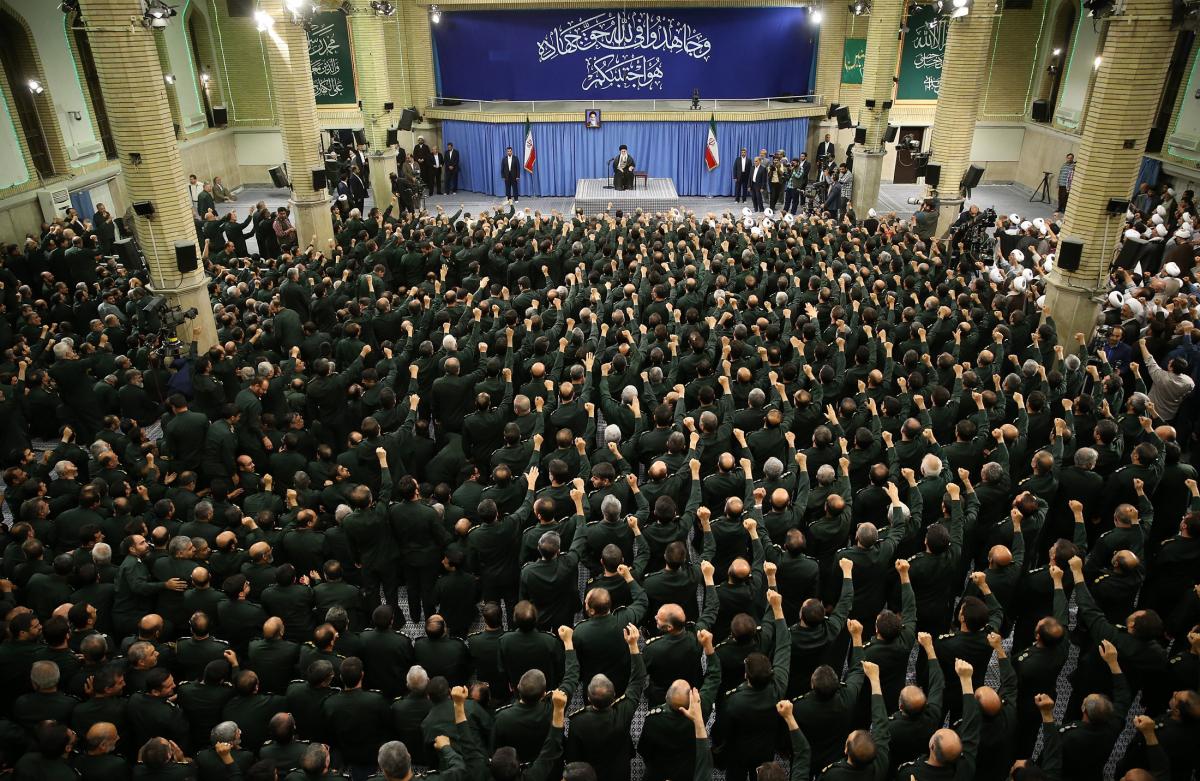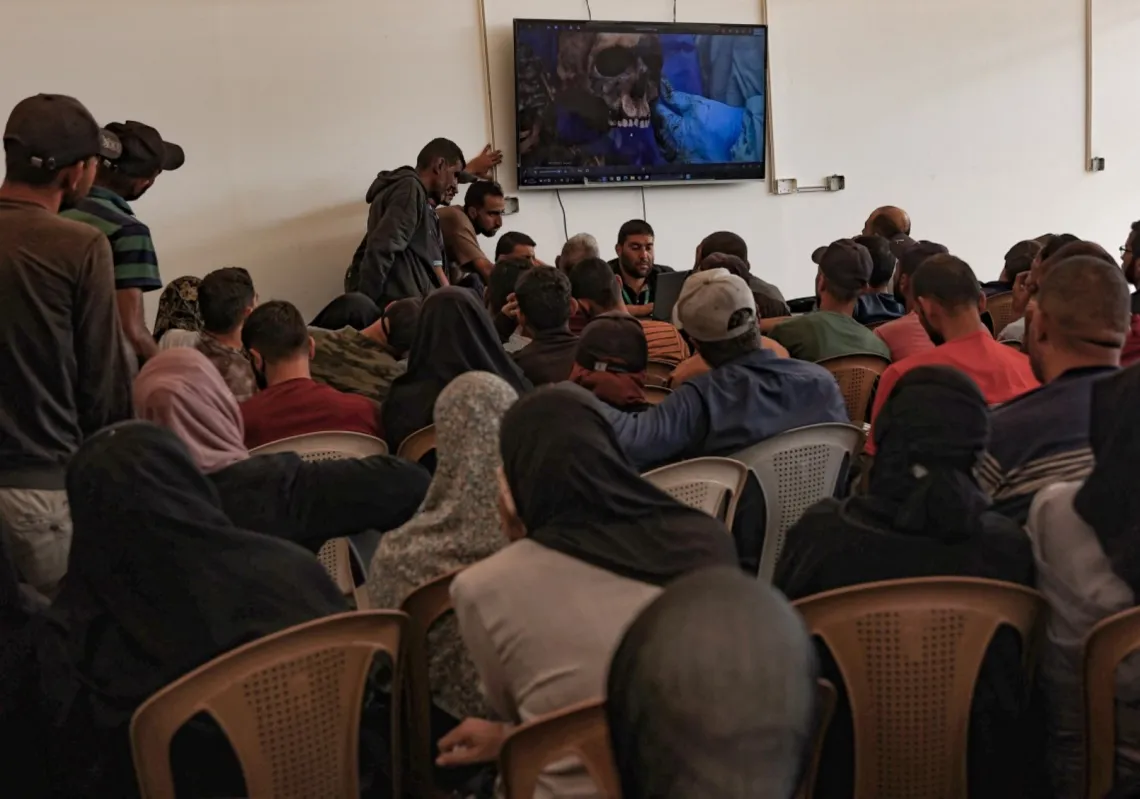It is no longer debatable that Iran is hurting from the extreme pressure policy that the Trump administration launched against the Iranian regime and its regional proxies. Right before Washington revoked waivers to Iran’s five remaining oil export markets, the administration declared Iran’s Revolutionary Guard a terrorist organization. Soon, the US will unveil more sanctions on top of the many previous ones it imposed last year after quitting the Iran nuclear deal. These sanctions are causing a collapse in Iranian economic growth. According to the IMF, Iran has been going into a deep recession, with inflation up 40 per cent.
Consequently, Iran’s regional proxies have also been hurting. Hezbollah in Lebanon has been facing a serious financial crisis. Its leaders have already implemented harsh new austerity measures, which will become more severe over time.
The question is two-fold: how will Iran retaliate to the US campaign, and more precisely, can Iran retaliate? What are the tools that the Iranian regime could use in case they decide to retaliate?
TENSIONS RISING
In a sudden – yet not too surprising move this week - National Security Adviser John Bolton announced Sunday the United States is deploying the USS Abraham Lincoln Carrier Strike Group and a bomber task force to the Middle East to send a message to Iran. He said in a statement that the decision had been made, “In response to a number of troubling and escalatory indications and warnings,” but did not elaborate.
The Wall Street Journal reported earlier that the US decided to do so based on new intelligence that suggests allied interests and American forces could be imperiled. Bolton added that the goal behind the move is “to send a clear and unmistakable message to the Iranian regime that any attack on United States interests or on those of our allies will be met with unrelenting force.”
In response, Iran repeated threats to block the strategic Strait of Hormuz, a critical passageway for the world's oil exports. However, it has not done so before and many observers see this move as unlikely.
On Monday, IRNA had reported that Tehran would restart part of its halted nuclear program – a more realistic response than blocking the Hormuz Strait - but stated at the time that they did not plan to pull out of the agreement.
Iranian President Hassan Rouhani followed up the next day by announcing that Iran will partially withdraw from the nuclear deal. Rouhani said in a televised speech that Iran would reduce its "commitments" to the Joint Comprehensive Plan of Action, or JCPOA, but would not fully withdraw. From this week on, Iran will keep its excess enriched uranium and heavy water, rather than sell it to other countries as previously agreed to limit its stockpile, Rouhani said.
He also said drastic measures would be implemented unless the remaining signatories of the deal -- Britain, China, France, Germany and Russia -- eased restrictions on Iran's banking and oil sectors in the next 60 days. The measures include removing caps on uranium enrichment levels, and resuming work on its Arak nuclear facility.
Following Rouhani's announcement, the White House responded with new sanctions on Iran's iron, steel, aluminum, and copper sectors. In a statement, US President Donald Trump warned that "Tehran can expect further actions unless it fundamentally alters its conduct."
WHAT ARE IRAN'S OPTIONS?
With tension escalating to a point of no return, the US administration feels that its sanctions policy has succeeded in weakening Iran’s economy, but also in containing Iran’s retaliation capabilities. It is true that Iran has very few options on the table, none of which military confrontation. However, Iran does have a long-term strategy of dealing with sanctions and although this time sanctions are hurting more, Iran still has a few options.
One, Iran can go back to the table and discuss a new deal between Iran and the US, something that the administration is aiming for and would be considered a big win for the Trump administration. The question here is the details of this expected deal. The US wants any future deal with Iran to be more comprehensive, that is to include – besides the nuclear program – Iran Ballistic Missiles Program and Ian’s regional operations.
The challenge is to get Iran to negotiate on these three issues, knowing that without its regional hegemony, Iran will not be able to “export the revolution,” and therefore lose the core of its very existence.
Two, Iran can wait till the 2020 US Presidential elections and hope that a new – Democrat administration – would come in, return to the JCPOA, and thereby ease the sanctions. The problem for Iran is that waiting Trump out while doing nothing might be counterproductive. There is a possibility that the next administration – democrat or republican – could realize that Iran is less threatening without a deal than with one, and might resort to continue the sanctions nonetheless.
Last but not least, Iran could escalate. If Iran decides to restart part of the nuclear program, it will be considered a serious escalation by the US, Saudi Arabia and Israel. This will bring to the table a serious possibility of military action against Iran’s nuclear facilities, and Trump’s sanctions policy could be coupled with a kinetic action against Iran.
As for Europe, which is still trying to salvage the nuclear deal and finding ways for Iran to stay committed to the deal, will see this as an escalation and an Iranian unwillingness to pursue cooperation with Europe. In that case, European countries might start imposing more sanctions on Iran, thereby challenging its economy further.

IRAN'S HANDS ARE TIED
While Iran is considering all these options, the regime still has the possibility of going after the US in the region via its proxies. Khamenei could authorize Qassem Soleimani, commander of the IRGC’s Quds Force, to activate Iran’s regional proxies against U.S. allies and interests in the Middle East. Iran has done it before, with very little consequences on the regime itself. Usually, its proxies take the blame and pay the price.
However, things changed. As warnings of such actions reached the US, responses came out very clear. Senator Mark Rubio tweeted: “Shia militias in Iraq would not conduct large scale attacks against U.S. forces in Iraq unless directed to do so by Quds Force commander Qasem Soleimani. Using proxies will not provide Iran or Soleimani deniability. They will be held directly responsible if such attacks occur.” He then added, “The U.S. is not looking to start a war with Iran. But any efforts by Iran to threaten shipping in the Strait of Hormuz and/or to target U.S. naval vessels or commercial shipping vessels will result in a swift, devastating & justified response.”
Iran can no longer hide behind its proxies. Iran can no longer escalate without consequences. Iran cannot impose its own rules of the game. Also, Iran cannot do nothing. Bottom line, whatever Iran does – or not do – Iran will not win this round.
There is an opportunity here to translate the success resulting from this policy into long-term strategies that would make sure Iran does not go back to its formerly strong position. The international community must start competing with Iran and its proxies where they’re weak. This means creating alternatives – economic and social, empower the opposition, and expose the ideological and political falsehoods of the Iranian strategy inside Iran and across the region. Many Iranians and Arab Shia are starting to realize Iran’s weaknesses and deceits. As they are looking for alternative rhetoric and leadership, the anti-Iran regional scene doesn’t seem strong enough to produce such alternatives. The International community has a role to play in this regard.








